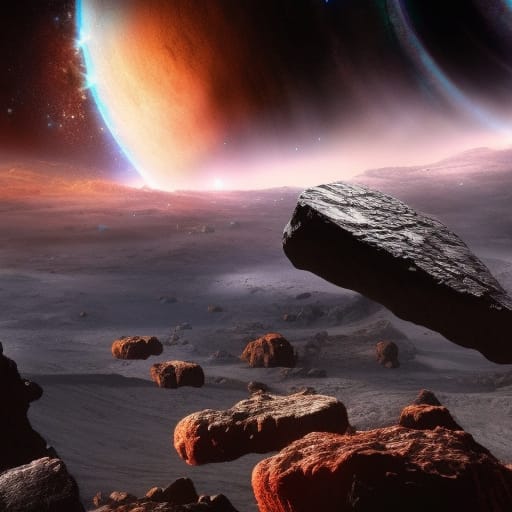Space: Asteroids

An asteroid is a small, rocky celestial body orbiting the Sun, primarily found in the region between Mars and Jupiter known as the Asteroid Belt. Asteroids are remnants from the early solar system and provide valuable insights into its formation and evolution. Here are the important aspects of asteroids:
Composition: Asteroids are primarily composed of rock and metal, with some containing significant amounts of water and other volatile compounds. Their compositions can vary, with some being rich in carbon, others in silicates, and some in metals like iron and nickel.
Size: Asteroids vary in size, with the smallest being only a few meters in diameter and the largest, such as Ceres (which is also classified as a dwarf planet), having a diameter of approximately 940 kilometers (584 miles). Most asteroids are irregularly shaped due to their relatively small size and weak gravitational forces.
Formation: Asteroids are believed to have formed about 4.6 billion years ago during the early stages of the solar system. They are leftover building blocks that never coalesced into a planet due to the gravitational influence of Jupiter.
Asteroid Belt: The majority of asteroids in our solar system are found in the Asteroid Belt, a region located between the orbits of Mars and Jupiter. The Asteroid Belt contains millions of asteroids varying in size and composition, with the largest being Ceres, Vesta, Pallas, and Hygiea.
Near-Earth Asteroids (NEAs): Some asteroids, known as Near-Earth Asteroids, have orbits that bring them close to Earth. These asteroids are of particular interest due to the potential threat they pose if they were to impact our planet, as well as for potential future asteroid mining opportunities.
Meteoroids, meteors, and meteorites: When small fragments break off from an asteroid, they are called meteoroids. If a meteoroid enters Earth's atmosphere, it burns up, creating a streak of light known as a meteor or shooting star. If a meteoroid survives its passage through the atmosphere and lands on Earth's surface, it is called a meteorite.
Space missions: Several space missions have been launched to study asteroids, including NASA's Dawn, Hayabusa, and OSIRIS-REx missions. These missions aim to better understand the composition, structure, and history of asteroids, as well as to develop technologies for potential asteroid mining and planetary defense.
Planetary defense: The study of asteroids is important for developing strategies to protect Earth from potential asteroid impacts. By identifying and tracking Near-Earth Asteroids, scientists can assess the risk of impact and plan appropriate deflection or mitigation strategies.
Asteroid mining: In the future, asteroids may serve as valuable resources for space exploration and mining. They contain a variety of elements, such as water, metals, and other valuable compounds that could be used for life support, building materials, or fuel in space.
Scientific importance: Asteroids provide valuable information about the early solar system, as they have remained largely unchanged since their formation. By studying their composition and structure, scientists can learn about the conditions that existed during the solar system's formation and the processes that shaped its evolution.